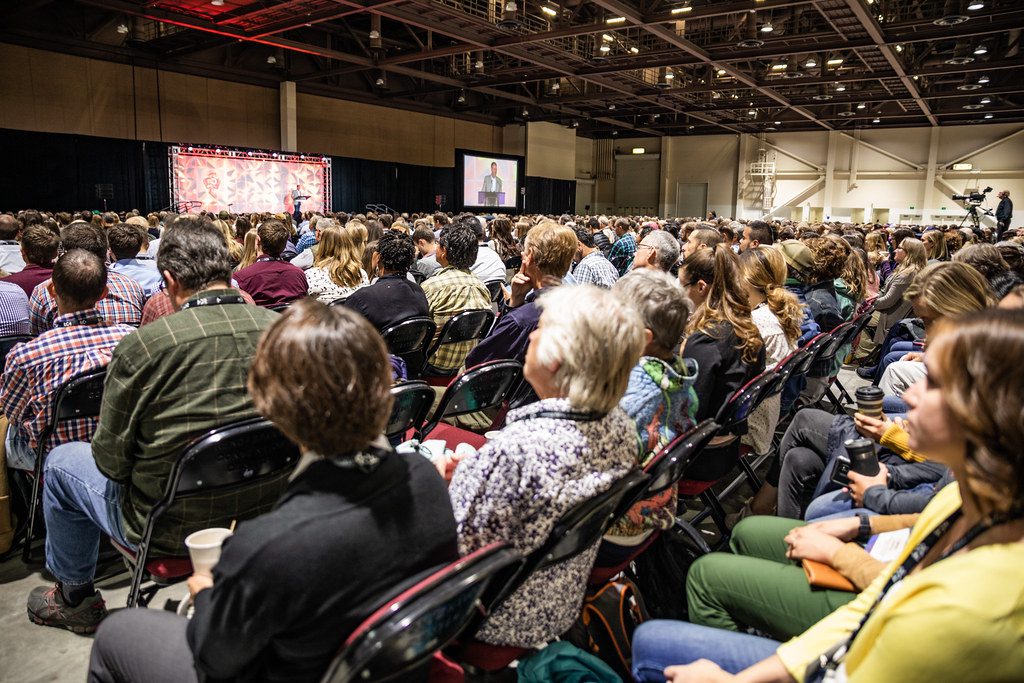Monday November 25, 2019

The 149th annual American Fisheries Society meeting held from September 29–October 3 in Reno, Nevada, was a truly unique experience for the thousands of fisheries professionals who attended, pulling them out of their aquatic bubble and into the terrestrial world of wildlife biologists. This represented the first ever joint conference between the American Fisheries Society and The Wildlife Society, and #TeamFish versus #TeamBird social media feuds aside, bringing the members of these two organizations together was a resounding success. As one of the largest gatherings of fish and wildlife professionals ever, this conference drew thousands of attendees representing hundreds of organizations, academic institutions, agencies, and businesses. Some participants even traveled from as far away as Cambodia, Bhutan, Niger, and Brazil to take part in this exceptional event. We’ve pulled together some of the highlights in our newest video.
Gathering these two societies together allowed for unique exchanges of ideas and perspectives. This was particularly evident in the multiple plenary sessions, which brought together renowned wildlife experts like CEO of the National Wild Turkey Federation Rebecca Humphries and prominent fish experts like University of Nevada Reno Professor and host of Nat Geo WILD’s Monster Fish Zeb Hogan. Because it often seems wildlife experts and fisheries experts speak different languages, this terrestrial and aquatic mind-meld was particularly insightful in discussions of communication, which included plenaries on “Communicating Sustainable Use of Fish and Wildlife” and “Communicating Conservation to Diverse Audiences.”

A mind-boggling number of concurrent sessions of presentations took place each day of the conference, which made it possible to learn about fish, bird, mammal, and reptile research all in the span of a few hours. Keen to contribute to this eclectic exchange, FISHBIO staff gave eight different presentations at the conference, ranging from the effects of drought on salmon spawning in the Stanislaus River to the use of video for communicating scientific publications. Together with the University of Nevada Reno, we also led a session on the status of migratory freshwater fishes and the Global Swimways Initiative. Also eager to soak up this unique learning opportunity, our staff listened to talks on salmon and steelhead ecology that spanned California’s San Joaquin Basin to Alaska’s Chena River. Presentations on advancements in environmental DNA (eDNA) revealed that the technique is being used to detect Pacific salmon and invasive New Zealand mudsnails alike, and even test for the presence of steelhead in predator diet samples. And though we had crossed state lines, we still tuned in to talks on the Sacramento-San Joaquin River Delta to listen to studies about delta and longfin smelt.

Beyond the presentations, several field tours provided opportunities to get outside and enjoy the beautiful streams and forests near the Reno area, including an electrofishing demonstration, guided bird walks, and a Lake Tahoe science tour. Attendees who needed breaks from scientific talks could also enjoy screenings of numerous films on wildlife, fisheries, and habitat restoration success stories, including an entry by FISHBIO entitled “Replenishing a River.” Other highlights included the 22nd annual Wildlife Society Quiz Bowl, in which groups of students duked it out in a contest of challenging wildlife trivia, and the annual American Fisheries Society Spawning Run, where steely-willed conference attendees braved frosty temperatures to compete in an early morning 5K. This collective conference provided a truly valuable experience for those who attended, and allowed for interaction between individuals who might otherwise never have been in the same room. Although next year’s 150th American Fisheries Society Annual Meeting in Columbus, Ohio, promises to be a momentous occasion, the knowledge and insight of our land-lubber colleagues in the Wildlife Society will certainly be missed.
This post featured in our weekly e-newsletter, the Fish Report. You can subscribe to the Fish Report here.
